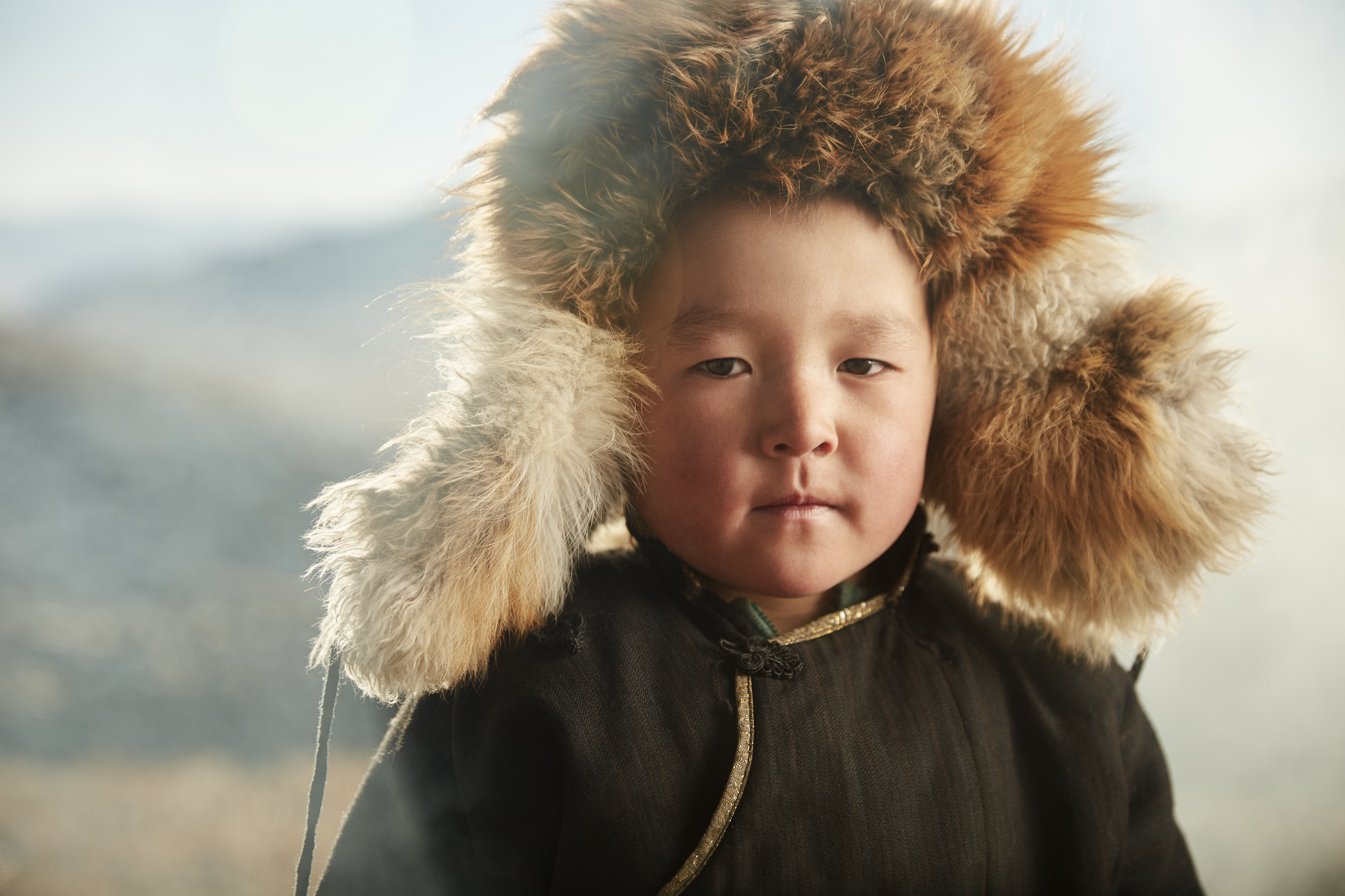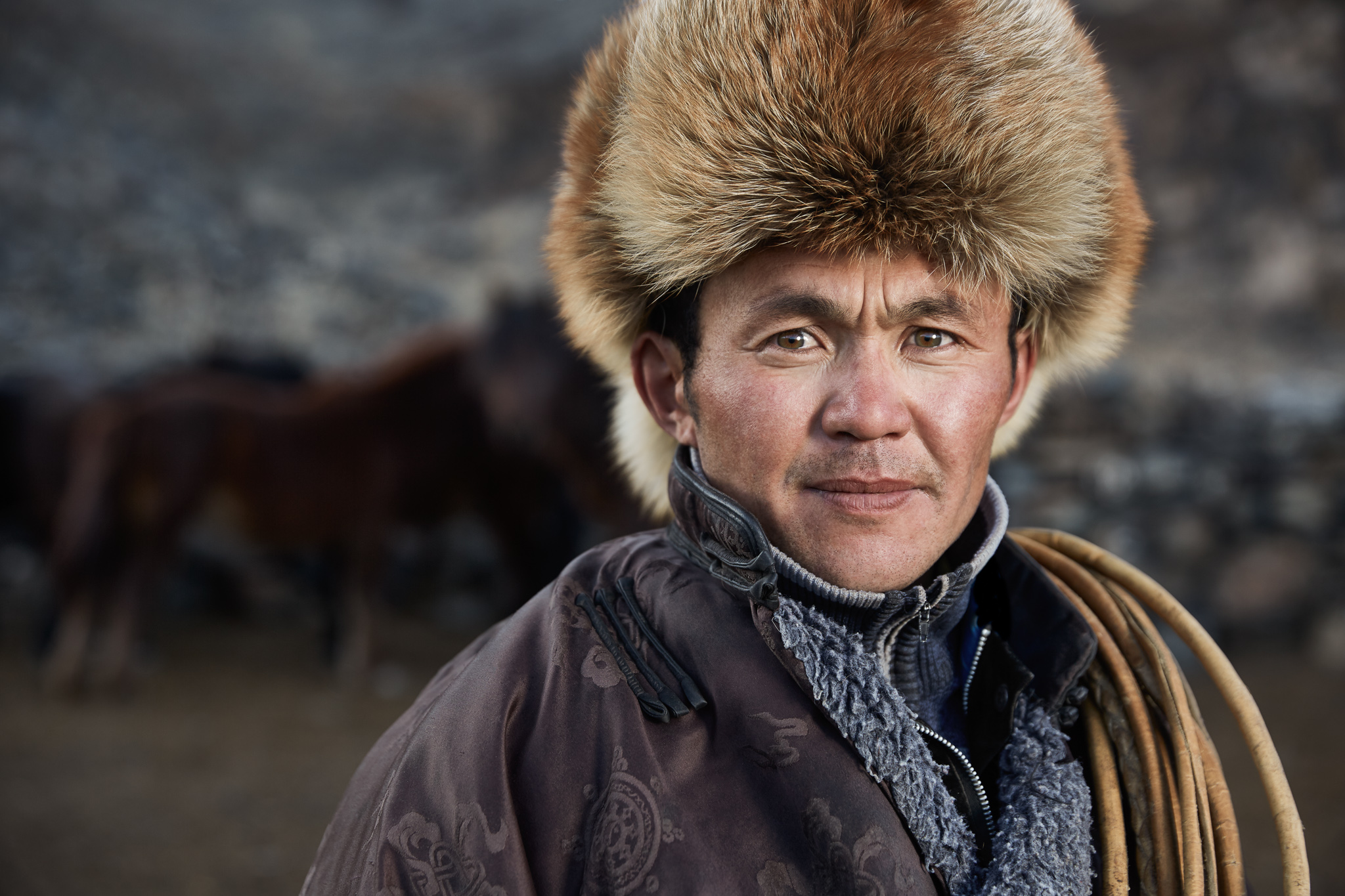The name Sasha Leahovcenco is probably familiar to most. We interviewed Sasha in August 2015. When we heard about his Eagle Hunter Project, a self-funded personal venture, we couldn’t resist a follow-up 10+4 Questions interview to find out what inspired him to seek out the Eagle Hunters and document their portraits, as well as the challenges he faced, and overcame. Though an accomplished commercial photographer, Sasha’s passion for documentary photography is evident through his personal work. Sasha’s Eagle Hunter work provides a striking sense of what it must be like living in those amazing landscapes and harsh conditions, and you feel their pride in keeping with their long standing traditions.
1. What inspired you to document the Mongolian Kazakh Eagle Hunters?
Mongolia in general was always a place I wanted to visit. And when my good friend Cale Glendening, who is a producer behind this amazing story, asked if I would like to join him for the trip, I immediately said yes. [Editor's insert: As soon as Cale's footage is ready, we'll link to it here]
2. How long did you plan for the trip? How long were you there? Was this project self funded?
I had about two weeks to get ready which included applying for a visa, getting some winter clothing and gear and figuring out the best way to get to Mongolia. We spent 5 full days in the country and my travels and expenses were self funded.


3. How did you get access to the Eagle Hunters? Did you know someone?
My friend Cale contacted a local guide who organized the trip for us from the capital all the way to the Delüün village in Western Mongolia. The Eagle Hunters that we spent time with lived about half an hour drive from the small village of Delüün in the mountains.
We visited two different locations where the eagle hunters lived. Both were near the Delüün village in the mountains. Since we travelled by car, it took us only an hour to get from one place to another.
Our guide, Jagaa was our interpreter. Before we arrived we asked him to meet with the Eagle Hunters and explain our intentions and purpose as far as film and photos.
4. Did you share a "ger" (traditional felt-lined tent) with the hunters?
The Eagle Hunters in that area of Mongolia live in the tents only during the summer time. As winter approaches they move to houses which are built out of clay. Since our trip took place during the winter, unfortunately, we didn’t have a chance to live in the traditional tents.
5. Do the Eagle Hunters breed their eagles or are they captured?
All of the eagle are captured in the wild and trained to hunt.


6. Is eagle hunting traditionally practised by men? Did you meet a huntress during your trip?
We heard stories of huntresses, but we didn't encounter any women hunting in the area we visited.
7. How would you describe the bond between the hunters and their eagles?
We were fortunate to spend a lot of time near these absolutely phenomenal birds and their owners and it’s astounding to witness the clear communication and understanding between the eagle and the hunter. The bond is undeniable.


8. Did you have to go through a crash-course to ride the pony?
Too be honest, we were winging the riding part on our end so the ride didn't last for too long, but they carry more than 240lb almost every day so at least the weight wasn't an issue ;)
The hunters ride their ponies with their provision and eagles frequently. Often journeying for 10-12 hours at a time.
9. What difficulties did you have to overcome on this project?
At the end of the day all the difficulties were worth the experience and outcome. But during our stay we had to climb a hill/mountain top every day to follow the eagle hunters and cary all our gear with us. We had a generator, so luckily charging the batteries every night wasn't a problem.
At night though, the temperature would drop to anywhere between -5 to -10 ºF (-20 to -23 ºC) which required sleeping with several layers on and consuming a lot of tea to stay warm. But since our days were active we were fine with an under layer, good warm pants and jacket.


10. What’s the eagle hunting like?
It’s a lot of patience, and hard work. Sometimes eagle hunters would hunt day after day without success. They often travel long distances, and it’s definitely a tiring job.
11. Can you describe a typical day during your trip?
Usually we would wake up at 7am, shoot some morning photos/video footage, have breakfast with the hunters and their family, and then follow them the entire day as they hunt. The days were cold but not unbearable. Especially when you're moving around that much.


12. Do the eagles get a share from the hunt?
The eagles do get a share of their catch. They are usually fed 2-3 times a day in a special way. Meaning, their food isn't just handed to them.


13. Was the younger generation keen to be trained as eagle hunters? Do you think the tradition will disappear, or be replaced with a tourist version?
The younger generations tend to try to go to school, and get a higher education. Yet there are still those who are trying to preserve the tradition and pass it on to their children. So I am hopeful that the tradition will continue to live on.
Tourism is not very common in the area we visited, as it is very hard to access and conditions of living are not tourist friendly. For instance - there are no inside restrooms in the houses, or any sort of beds to sleep on. You are in the wild, sleeping on the floor and don't have access to running water.
14. What gear did you bring? What did you end up using?
I brought two Canon 5d mark III’s, 24-70 II, and 85mm. And for the light - 1xAlienbee 800, 35 Octa and portable battery.
For trips like these I always like to pack as light as possible since I know I will need to carry it all around.
The landscape was so gorgeous, so I wanted to incorporate it in all of my shots that’s why I ended up shooting 95% of all my photos on 24-70II mostly wide angle.
Follow Sasha






































